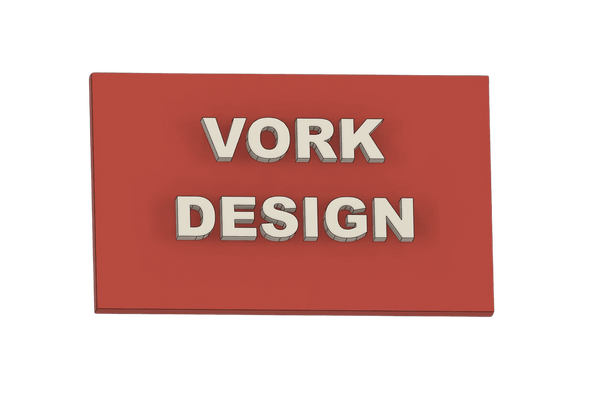Choosing the Right Filament for Your 3D Printing Projects
When it comes to 3D printing, selecting the correct filament is one of the most important decisions you'll make. The material you choose impacts the durability, flexibility, and overall performance of your final product. At Packout Insert by Vork Design, we primarily use PETG for its unique properties, but there are a wide range of filament options available, each suited for specific applications. Here, we’ll explore the key factors to consider and compare various filament types to help you make an informed decision.
Understanding PETG: A Versatile Choice
PETG (Polyethylene Terephthalate Glycol) is our go-to filament due to its balanced properties. It combines the strength of ABS with the ease of printing PLA, making it ideal for durable and high-performance parts like our custom inserts. PETG’s key characteristics include:
-
Temperature Resistance: With a high melting point, PETG performs well in both indoor and outdoor environments.
-
Strength and Durability: PETG is impact-resistant, making it perfect for parts that endure wear and tear.
-
Chemical Resistance: It resists common chemicals and moisture, ensuring long-lasting performance.
-
Ease of Use: While slightly more challenging than PLA, PETG is still user-friendly and doesn’t emit strong odors during printing.
Exploring Other Filament Options
While PETG is a fantastic all-around choice, other filaments might better suit specific needs. Here are some popular alternatives:
PLA (Polylactic Acid)
-
Pros: Easy to print, biodegradable, and available in many colors.
-
Cons: Limited temperature resistance and lower durability.
-
Best For: Prototyping and decorative models.
ABS (Acrylonitrile Butadiene Styrene)
-
Pros: Strong, durable, and heat-resistant.
-
Cons: Requires high-temperature settings, prone to warping, and emits strong odors.
-
Best For: Industrial applications and functional prototypes.
TPU (Thermoplastic Polyurethane)
-
Pros: Flexible, impact-resistant, and highly durable.
-
Cons: Challenging to print and slower print speeds.
-
Best For: Flexible parts like gaskets or phone cases.
Nylon
-
Pros: High strength, flexibility, and wear resistance.
-
Cons: Requires high temperatures and is hygroscopic (absorbs moisture).
-
Best For: Mechanical parts and tools.
Carbon-Fiber Reinforced Filaments
-
Pros: Extremely rigid and lightweight.
-
Cons: Abrasive to printer nozzles and expensive.
-
Best For: High-strength applications like aerospace or automotive parts.
Factors to Consider When Choosing Filament
-
Application: What will the printed part be used for? Prototypes and decorative pieces might require PLA, while functional parts might need PETG or ABS.
-
Temperature Resistance: Consider the operating environment. Materials like PETG and ABS handle higher temperatures, whereas PLA does not.
-
Strength and Durability: For heavy-duty applications, PETG or Nylon may be the better choice.
-
Flexibility: TPU is perfect for parts requiring elasticity, while rigid materials like PLA or Carbon-Fiber Reinforced filaments work for more static components.
-
Ease of Printing: Beginners might prefer PLA or PETG due to their lower learning curves.
Why PETG Works for Us
At Packout Insert by Vork Design, we prioritize quality and durability in all our custom inserts. PETG provides the perfect balance of strength, chemical resistance, and ease of use, making it ideal for 3D-printed solutions that stand the test of time. Thats why you can be sure your Milwaukee Packout Insert is of the greatest quallity!
Conclusion
Selecting the right filament is essential to achieving the best results for your 3D printing projects. By understanding the properties and applications of various materials, you can make a choice that meets your specific needs. If you’re interested in learning more about how we use PETG or want to explore our custom-designed inserts, visit Packout Insert today.
Ready to elevate your 3D printing projects? Let’s get started!






